Higher Education Administration
Education plays an important role in human life, and the places where to study must be properly chosen. In higher education, decision-making is defined as a complex process in terms of which the balance between needs and interests occurs, the evaluation of institutions’ missions cannot be neglected, and the consideration of fiscal issues should be admitted (Goonen & Blechman, 1999). This project aims at discussing one particular higher education department with a clear focus on institutional and department characteristics.
Americans have access to a variety of colleges and universities where they can continue their education, and their choices are made regarding their personal demands and expectations. In this paper, the College of Business at the University of Colorado – Colorado Springs (UCCS) will be thoroughly studied to understand if the institutional mission aligns with the mission of the department.
Institutional Characteristics
UCCS is one of the main campuses in the University of Colorado system. It is the representative of the public sector, meaning that funds can be received from a national government. Despite the type of a higher education institution, it has to serve a public purpose and promote educational aspirations for Americans (Shapiro, 2005). Not to be confused with a variety of institutions and their goals, the Carnegie Classification is used to categorize facilities.
According to this framework, UCCS may be found in the Masters Large group with at least 200masters-level degrees available to students (“Colleges results online,” 2018). At this moment, there are 10,619 undergraduates in the university with 25% of those who take distant education (“Colleges results online,” 2018). All of them are proud that they get a chance to be a part of this university and follow their dreams with appropriate degrees and knowledge.
The mission of the campus under consideration is the organization of a perfect system of education. It should meet a majority of selective admission standards and offers many interesting undergraduate degree programs in Business, Engineering, Health Sciences, Teacher Preparation, and Liberal Arts (“University of Colorado Colorado Springs,” n.d.). Students must obtain life-enriching experiences and the spirit of discovery to contribute to the future of Colorado as well as to the whole nation (“University of Colorado Colorado Springs,” n.d.). Innovation and collaboration are the values that create a solid basis for modern students and teachers and make them good decision-makers and problem-solvers.
UCCA is a fast-growing higher education facility in the United States. In addition to properly established goals and mission, this university continues to be home for more than 1,400 employees and 11,000 students who generate about $30 million in taxes annually (“About University of Colorado Colorado Springs,” n.d.). The list of schools and colleges within the frames of this institution is impressive indeed: students can receive their bachelor’s, master’s, and doctoral degrees in more than ten fields, including health, business, public affairs, education, arts, or engineering.
Department Characteristics
In this paper, special attention to the College of Business will be paid. This department was organized in 1965 as the place where challenging, and collaborative learning environment is promoted (“About College of Business,” n.d.). As well as any university, the College of Business offers a variety of opportunities for students and teachers to work with people who possess special abilities and interests (Lombardi, 2013). Its mission is to emphasize ethical issues on the promotion of special undergraduate programs and selected master’s degrees.
The completion of goals and the development of the department are controlled by a special directory that can be organized in a special organizational chart. There are four main sections in the chart: administration, faculty, staff, and lecturers as they are shown in Figure 1. Each sector has its responsibilities and tasks that are regularly checked by the dean of the department.
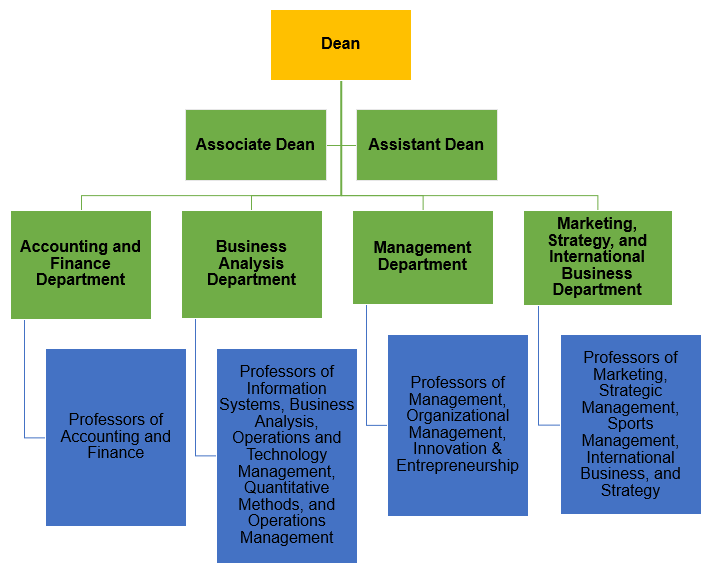
The peculiar feature of this department is that all its members are completely devoted and connected with the local business community. It is not enough to prepare good students and provide them with knowledge and experience. It is necessary to prepare human minds to work in the field of business, use real-world research and applications, and create strong networks. There are three main spheres where educators in the department have to work: teaching, research, and service (“About College of Business,” n.d.).
They offer small but engaging classes where students can interact and communicate, sharing their knowledge and experience and collaborating under different conditions. In addition, various internship and mentorship opportunities can be used to develop the chosen careers and obtain necessary skills. Beneficial relationships are based on the principles of mutual work, theory, and practice supported by several qualified international partners (“About College of Business,” n.d.). Students are not only participants of research and learning activities but also direct stakeholders in the local community.
Institutional vs. Department Mission
Through a thorough evaluation of missions defined by the University and its particular department, their missions are aligned with each other. Collaboration and the spirit of discovery are the values that supported by the chosen institutions (“About College of Business,” n.d.; “About University of Colorado Colorado Springs,” n.d.). Their missions include the integration of theory and practice and the development of academic skills when students have to rely on their past knowledge and continue improving, focusing on modern technologies and sources.
Therefore, such factor as innovation should be mentioned in the discussion of alignment of institutional and department missions. Students have access to new programs that promote innovating and critical thinking. Inspiration through building new relationships and professionalism cannot be neglected because all the employees of the department, as well as the institution, have to follow the highest ethical standards and rules (Goonen & Blechman, 1999). The building of the successful future begins with the ideas offered by the College of Business.
Annually, there is a need for institutional realignment of missions and priorities. This process usually includes “the addition and the elimination of programs or activities, belongs in special strategic reviews in response to opportunities or fiscal crises” (Lombardi, 2013, p. 112). The implications of such steps can be observed in the annual outcomes of the College of Business as well as the Colorado Springs campus.
For example, the retention rate of undergraduate students in UCCS comprises 63% from fall 2016 to fall 2017, and the retention rate of the College of Business is 73% (“College of Business: Student outcomes,” 2018). The current graduation rate of the UCCS is 43%, whereas the College of Business has 46% (“College of Business: Student outcomes,” 2018). Thousands of students are grateful to the University and their School because of real-life opportunities to improve their future and cooperate with true professionals in the field of business.
Academic Programs and Accreditation
The articulation of mission statements of the university and the chosen education department is a significant step in assessment and accreditation. These factors become significant attributes of short- and long-term change (Driscoll & de Noriega, 2006). Despite the fact that academic facilities have to be ready for multiple changes from the organizational point of view, any permanent change touches person’s behavior and understanding of needs and purposes (Shavelson, 2010).
During an interview with a leader of the College of Business that is the higher education department under study, several clear lessons and explanations were obtained in regards to the current problems and concerns. This communication shows that, despite numerous intentions to create perfect conditions for both students and teachers, the faculty and the academic staff are challenged by such processes as globalization, technological revolution, and the necessity of the reformation of higher education. As a result, organizational decisions are made too slowly with no efforts to promote extensive discussions and analysis.
Communication with a representative of a higher education administration helps realize that many organizational problems and challenges lie in the current personal misunderstandings and unpreparedness. Decisions turn out to be an integral part of an education or teaching process. Administration in higher education depends on a variety of decisions that have to be made regarding available resources and established goals.
The leader of the chosen department underlines the role of globalization and the need to improve the management of human and economic resources regularly. Accreditation is a good chance to investigate the results of learning processes and improvements (Driscoll & de Noriega, 2006). However, the results do not indicate the problems that may appear during the working process. Therefore, the leader says about the combination of such factors as staff fatigue, uncertainty, and high expectations in the face of globalization when European, Chinese, and American institutions have to compete and go through painful transformations to meet new standards.
The main challenge is to find effective stakeholders and motivators for the academic staff to continue improving services and offering students new options and guarantees. Many students are ready to choose a college and change their minds as soon as they observe a better opportunity. However, because of unstable budgeting or new standards that appear fast, the department faces such a problem as making necessary decisions slower than other colleges and schools can.
Changes of new college approaches and techniques are limitless today (Shavelson, 2010). The head of the department believes that, during the last several decades, the College of Business was an iconic source of knowledge for thousands of students who were ready to accept the admission test score policy. Now, if students are not satisfied with the offered policies, they can make another choice. As a result, fresh ideas have to be developed in a short period of time to attract people and prove the appropriateness of the courses.
However, organizational changes and new options are dangerous not only for teachers and the department staff but for students as well. To keep up with new requirements, the College has to introduce new assessment tools and technologically advanced methodologies. Students have to improve their knowledge about how to use technologies, how to find the necessary material, or when to pose questions in addition to new tasks, requirements, and duties. In other words, the doubtful nature of the technological progress opens new opportunities, but to use them, students and the staff have to cope with certain challenges and develop a skill of making fast decisions.
The interview conducted with the leader shows that the department staff members are ready to take new steps and improve their work to create good conditions for teaching and studying. Still, they need new plans and strategic management to discover additional options, find new stakeholders, and stabilize the budget. The main goals are to elaborate a decision-making process and distinguish the duties so that each member is prepared for new requirements. Regular meetings, direct communication with the representatives of faculties, and presentations can be effective. However, it may not be enough regarding current globalization and technological progress. The College of Business can offer its students and educators a lot, and communication and collaboration between the staff should help promote new opportunities with ease.
A leader should follow innovations and consider available sources to make a correct decision. At the same time, all the staff should be informed and accept change. One person can hardly cope with a number of multiple tasks that result in one organizational change. The participation of all departments and students is an obligatory factor to achieve positive results. Therefore, slow decision-making and the inevitability of new demands and options is an overcoming problem. Screening, diagnosis, and evaluations have to be properly developed, and there is a need to create a team of professionals who are ready to understand this inevitability and take a correct course in the development of the department.
Student Affairs
In the previous SLP assignment, the problem of slow decision-making was identified. In this part of the work, it is necessary to investigate a theory that may be applied and help the staff members not to make mistakes in the future. According to the Problem-to-Theory Application Table developed by Bess and Dee (2012), there is a list of related theories and conceptual frameworks, including modes of decision making, group vs. individual decision making, and shared decision making.
Regarding the complexity of the offered problem and the necessity to find new stakeholders, the decision to use the shared decision-making model developed by Vroom and Yetton in 1973 and improved by Vroom and Jago in 1988 is made (Bess & Dee, 2012). This model improves a traditional decision-making theory through the developing of new strategies and criteria for different situations to improve the quality of decisions and minimize the time that has to be spent on making a final choice.
The distinct feature of this framework is the categorization of the steps which are crucial for fast decision-making. There are three main continuums where leaders have to work: autonomy, sharing, and delegation (Bess & Dee, 2012). Within these modes, there are several integral steps that cannot be ignored by a leader. They include the necessity for a leader to make an independent decision and gather enough information to support change, the obligation to discuss problems with the staff, share personal vision, and collaborate in a group setting, the importance to analyze the problem collectively and gather opinions, and the need to delegate a problem and use a public opinion to present a final independent decision.
Decision-making usually consists of a number of steps, including the necessity to take care of teachers. Still, the needs of students and available resources cannot be ignored in decision-making (Paine, 2013). Vroom and Jago introduced eight main contingencies or independent variables that have to be taken into consideration during shared-decision making (Bess & Dee, 2012). First, leaders must pay attention to quality requirements and identify all technical aspects within a decision.
Then, commitment requirements underline the goals and responsibilities of a leader in a particular situation. The next step is the quality and amount of information that is available to a leader about change and associated problems. With the help of the obtained knowledge, the structure of a problem with its alternative solutions can be obtained. In addition to these variables, such issues as commitment probability and goal congruence should be mentioned to identify the level of interest and preparedness among subordinates. Finally, all conflicts between the staff must be identified and resolved to make sure that all parties have enough information about the change.
In general, shared decision-making is a complex task, and facilities are not ready to apply it quickly. However, as soon as some time is spent to understand its basics, the steps may be automatically taken, leading to an ability to make shared decisions and solve organizational problems quickly. Four modes should be passed through to reach a final decision, which are autocratic, consultative, group, and delegative. Leaders and their subordinates can choose different ways to complete their tasks, but all of them have to work in accordance with a scheme developed by Vroom, Yetton, and Jago and solve their problems.
Personnel Management
The past two assignments help create a solid theoretical background and gather enough material to understand why the chosen problem matters for the department, and what steps must be taken by a leader. Despite the existing positive effects of globalization, technological progress, and reformation, there are still some challenges and problems that influence decision-making and problem-solving in the facility (Hogler, 2004). Therefore, it is recommended to use a new model to improve the working process and achieve the desired organizational success. The shared decision-making model is a perfect solution for the College of Business at the UCCS.
As it is shown in Figure 2, the application of the chosen conceptual framework is not complicated if a person follows the steps in the model developed by Vroom and Jago.
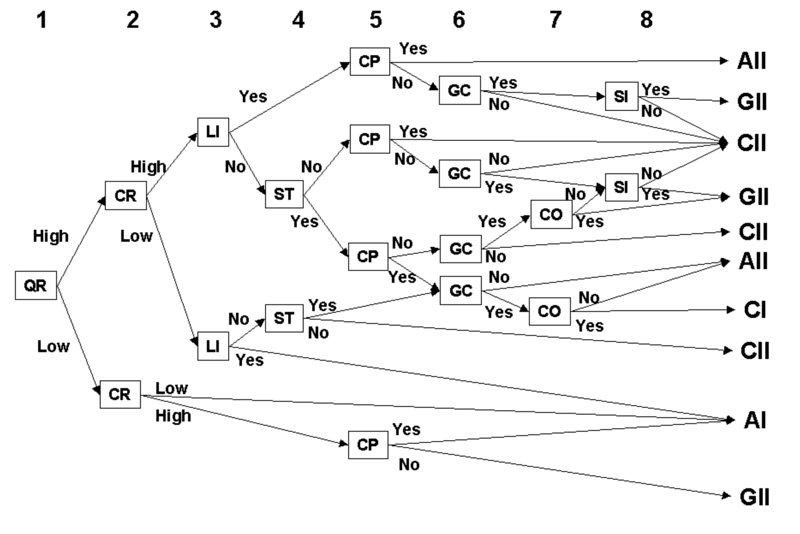
Although an unfamiliar reader or user of this model may find it complicated or hard to understand, everything will be clarified after several uses and the evaluation of each point. First, it is necessary to decide if the quality of the decision is critical for an organization and its people. Second, depending on the first answer, the identification of the commitment requirement is obligatory. The leader should clarify if subordinates have to be involved in decision-making.
Then, the task of the leader is to present all available information about the topic to clarify the next directions. The next important step is to evaluate the problem and available alternatives: if the department has additional ways out of the situation. With all this information being gathered, the approximate level of subordinate commitment must be identified. In other words, the question if the academic staff wants to participate in decision-making should be posed.
The final steps of this decision-making process include goal congruence (attitudes of the staff toward change), conflict issues (if the staff may have the priorities that contradict change), and subordinate information (the facts that employees can offer to solve current problems). This simple but effective way to identify what mode is preferable for the department in a particular situation can be taken in one minute to come with a clear, fast, and effective decision.
As it is shown in Figure 3, the current problem of slow decision-making because of globalization and technological progress can be solved within the group model II when a leader shares the problem with the staff and provides all available information to the group to discuss all the aspects together and make a common solution instead of developing personal approaches and understandings (Bess & Dee, 2012). This model helps the leader understand that there is no need to wait for something or try to find a solution alone. This problem is the problem of the whole department, and its solution depends on how well collaboration can be organized.
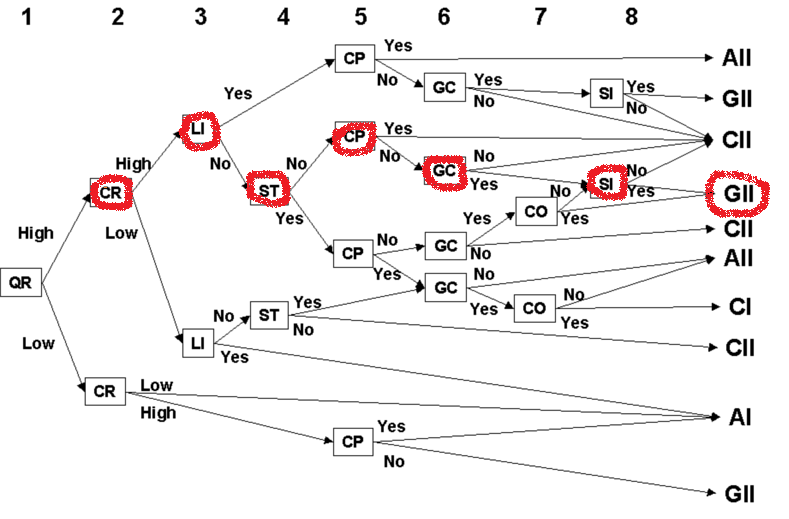
The leader is able not only to save his or her time in making a final decision but clarify who else can be involved in this decision-making process, and what kind of help may be offered. In addition, a list of positive outcomes can be obtained from this framework. For example, the leader can develop a plan of organizational change while answering the questions in this model. It is possible to understand better the nature of change and take the steps that are necessary for the department.
While thinking about the effects of the problem of slow decision-making, the leader observes the skills and potential contributions of all subordinates and evaluates their roles and responsibilities. This approach helps avoid direct and indirect discrimination and choose the right people to manage change (Hall, 2003). Promotion of organizational justice in the workplace is a good chance to motivate people and establish trustful employer-employee relationships (Cloutier, Denis, & Bilodeau, 2012). When the staff experiences the fair treatment of the leader, the members are ready to participate in discussions and support each other to survive change or deal with a problem.
To conclude, any organizational change or problem has its roots and consequences. Some facilities are ready to make fast decisions and find an effective solution, and some education departments need additional help and knowledge. In this project, the College of Business is the department that faces a serious problem because of slow decision-making processes and the inability to cooperate quickly in the face of globalization and high technological progress.
Although the leader should not complete all the tasks independently and rely on personal knowledge only, his or her task is to make sure that the right people are chosen, and the clear instructions are given. Employee cooperation and an understanding of available sources and new standards are integral in organizational change. Education is a constantly developing field, and the academic staff should be prepared for new requirements, as well as to prepare students for changes.
Budget, Finance, and Facilities
Slide 1: Description of the Department
Department: College of Business
Institution: University of Colorado (Colorado Springs)
Sector: Public
Carnegie Classification: Masters’ Large group
Size: 1,400 employees and 11,000 students
Mission: to promote special undergraduate programs and selected degrees and prepare human minds to the world of business
The College of Business is a higher education department that is chosen for analysis in this project. It is a part of the University of Colorado Colorado Springs (UCCS), a public facility that is identified in the Carnegie Classification at the Masters’ Large group, meaning that this institution can offer more than 200 degrees to its students (“Colleges results online,” 2018). More than 1,400 employees work at UCCS, and more than 11,000 students study there (“About University of Colorado Colorado Springs,” n.d.). The mission of the College of Business and UCCS are similar in their intentions to promote special undergraduate programs for students and develop specific degrees, depending on students’ skills. The main task of the College of Business is to prepare students’ minds to work in the world of business.
Slide 2: Organizational Problem: Causes
Outside Factors:
Globalization
Technological progress
Reformation of education
Internal Factors:
Staff fatigue
High expectations
Lack of training
During an interview with a leader of the College of Business, several factors that cause the development of new organizational problems are identified. Globalization results in certain changes that occur in the management of human and economic resources. New facilities offer opportunities to students, create various learning conditions, and develop special programs. The department has to work hard not to lose the staff and attract the attention of new students.
The technological progress speeds up a learning process, but the staff and students should improve their knowledge to use these options properly. As a result, the department needs new regulations, and the reformation of education occurs. In addition, such personal factors as fatigue, the establishment of high expectations, and the lack of training among the employees lead to new problems.
Slide 3: Organizational Problem: Outcomes
Staff unpreparedness to new changes
Leader’s lack of necessary technical skills
Necessity of new stakeholders and motivators
New strategic management plans
Slow decision-making
The leader of the department admits that general success of the facility cannot be ignored. Still, looking closer to the offered environment and discussing the options, specific organizational problems can be identified and must be solved (Shavelson, 2010). For example, sometimes, the staff is not ready for new changes. Despite the gained experience and knowledge, the leader lacks the required technical skills and needs more time to learn improved standards. There is a burning need for new stakeholders and motivators for employees, as well as new strategic management plans. All these challenges lead to one serious organizational problem – slow decision-making in higher education.
Slide 4: Conceptual Framework Essence
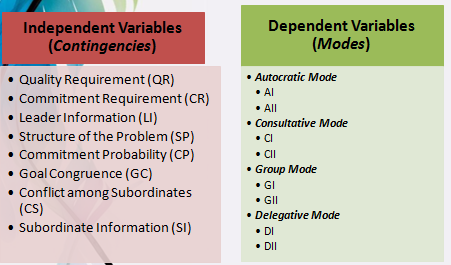
The offered conceptual framework was developed by Vroom, Yetton, and Jago at the end of the 20th century. The authors identified eight independent variables, known as contingencies, and introduced four modes for decision-making that depended on the choices made by a leader (Bess & Dee, 2012):
Quality requirement: Is the quality important in decision-making?
Commitment requirement: Should subordinates be committed to decision-making?
Leader information: Does the leader have enough information about the problem?
Structure of the problem: Are there any alternative solutions?
Commitment probability: Will subordinates accept a decision?
Goal congruence: Can organizational goals be achieved under new conditions?
Conflict among subordinates: Are there any concerns about the decision made?
Subordinate information: Do subordinates have sufficient information?
Autocratic mode: AI (a leader makes independent decisions, using available information), AII (a leader makes independent decisions but uses information from subordinates);
Consultative mode: CI (a leader makes a decision after discussions with subordinates), CII (a discussion is organized in a group setting, but a decision is made by a leader alone);
Group mode: GI (a leader and a subordinate discuss a problem and a make a mutual decision), GII (a group of subordinates participate in discussions and use the information offered by a leader to make a common decision);
Delegative mode: DI (a subordinate receives full responsibilities to solve a problem alone)
Slide 5: Application of the Conceptual Framework
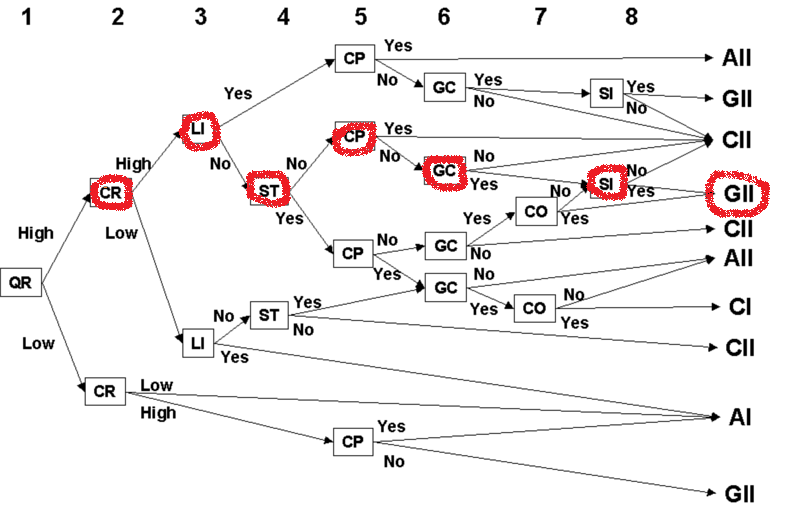
In this case, the main organizational problem is slow decision-making. The shared decision-making model helps solve this problem and save time for discussions and information search. What is necessary is to answer the questions from the model and understand what kind of mode is required. The line of decision-making is as follows:
There is a critical importance of decision quality for the department. The leader does not have enough information to solve the problem alone. There are no clear alternative decisions for the chosen problem at this moment. The subordinates would be eager to participate in discussions and share their thoughts on the matter. This decision will share the goal of the department without any conflicts among subordinates. Regarding the fact that the subordinates have information that is crucial for decision making, the required mode for decision-making is GROUP TWO when the leader motivates the staff to discuss the problem and develop a decision mutually.
Slide 6: Change Outcomes
Saved time
Clear decisions
Staff motivation
Trustful employer-employee relationships
New standards and strategic improvements
The shared decision-making framework helps the faculty save time and make clear decisions. The academic staff is properly motivated by the leader through the establishment of trustful relationships and cooperation. As a result, new standards can be accepted regarding available strategic improvements and sufficient department and institutional goals.
Slide 7: Conclusion: Understanding of Organizational Problems
Organizational problems may vary
Globalization and technological progress can bring both benefits and challenges
Employees must be prepared to work hard and recognize threats at their early stages
Collaboration and communication can never be neglected
This project provides me with an opportunity to learn better the essence of organizational problems and the necessity to take rational steps as soon as possible. Globalization and technological progress can be either a beneficial discovery for the organization or a dangerous threat for its employees. Therefore, it is recommended to choose an effective decision-making model and promote communication and collaboration to cope with challenges and introduce powerful solutions.
Slide 8: Conclusion: Understanding of Higher Education
Staff members may be unprepared even staying true professionals in their fields
Cooperation is a key to organizational success
Shared decision-making is a model for academic facilities to be followed
In general, my understanding of higher education administration has been considerably improved during the work on this problem. I realize that despite high-level professionalism of the staff, the department members may stay unprepared to certain changes and innovations. It is not enough to be acknowledgeable, but it is important to work hard and be ready to cooperate. Shared decision-making is a chance for many academic facilities to improve their working conditions, attract the attention of new students, and increase staff satisfaction.
References
About University of Colorado Colorado Springs. (n.d.). Web.
Bess, J. L., & Dee, J. R. (2012). Understanding college and university organization: Theories for effective policy and practice (Vol. 1). Sterling, VA: Stylus Publishing.
Colleges results online: University of Colorado Colorado Springs. (2018). Web.
Shavelson, R. J. (2010). Measuring college learning responsibly: Accountability in a new era. Stanford, CA: Stanford University Press.
About College of Business: Vision & mission. (n.d.). Web.
About University of Colorado Colorado Springs. (n.d.). Web.
Cloutier, J., Denis, P. L., & Bilodeau, H. (2012). Collective bargaining and perceived fairness: Validating the conceptual structure. Relations Industrielles, 67(3), 398-425.
College of Business: Student outcomes. (2018). Web.
Driscoll, A., & de Noriega, D. C. (Eds.). (2006). Taking ownership of accreditation: Assessment processes that promote institutional improvement and faculty engagement. Sterling, VA: Stylus Publishing.
Goonen, N. M., & Blechman, R. S. (1999). Higher education administration: A guide to legal, ethical, and practical issues. Westport, CT: Greenwood Publishing Group.
Hall, A. (2003). Managing people. Maidenhead, Berkshire: McGraw-Hill Education.
Hogler, R. L. (2004). Employment relations in the United States: Law, policy, and practice. Thousand Oaks, CA: SAGE Publications.
Lombardi, J. V. (2013). How universities work. Baltimore, MA: Johns Hopkins University Press.
Paine, G. E. (2013). Caring about students – The work of student affairs. Journal of College and Character, 14(3), 223-230.
Shavelson, R. J. (2010). Measuring college learning responsibly: Accountability in a new era. Stanford, CA: Stanford University Press.
Shapiro, H. T. (2005). Larger sense of purpose: Higher education and society. Princeton, NJ: Princeton University Press.
University of Colorado Colorado Springs: Mission, vision and values. (n.d.). Web.